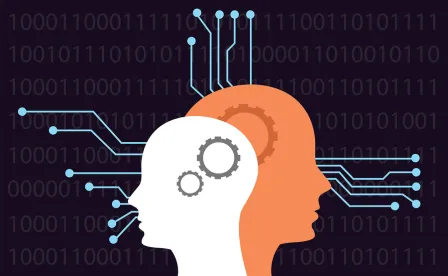When it comes to artificial intelligence (“AI”), or intelligence exhibited by machines, most people immediately think of cinema’s sentient computers such as HAL, Skynet, or Samantha. Although those machines are just Hollywood’s fictional creations, the underlying notion that AI will play an integral role in every aspect of our lives is very real indeed. With the exponential rate of technological change, AI will continue to affect our lives more quickly and pervasively than ever before. One area that is already being impacted is the workplace.
From algorithms analyzing employee data, to computer and robotic laborers in retail and manufacturing, to the rise of the on-demand worker, AI has already disrupted how virtually every workplace operates. There is little doubt that the time to develop a workplace strategy is now. Some of the issues that organizations should consider as they introduce AI into the workplace include:
- HR Technology: Whether it is people analytics, digital interview platforms, or chat bots, AI is quickly becoming mainstream in human resource departments. Fueled by efficiencies and other benefits, these AI technologies seek to combine “big data” with human insight to glean unique information about talent for and within an organization. Employers introducing these technologies should make sure to review the vendor contracts and algorithms for employment law issues, such as whether the AI accounts for people with disabilities. Monitoring to make sure that the technologies do not have a disparate impact is also advisable.
- Union Issues: Employers that have represented workforces may need to bargain with their labor unions over the introduction of AI into the workplace, as well as the effects of AI on represented employees. Non-represented employers should make sure that the AI does not unlawfully interfere with its employees’ right to engage in organizing activities, discuss wages, hours, and other terms and conditions of employment. Care should also be taken to make sure that data captured and stored with AI is not used for purposes prohibited by federal labor law, such as for unlawful surveillance.
- Data Privacy & Security: Many workplace AI solutions, by their very nature, collect and store large amounts of employee personally identifiable information (“PII”). Organizations utilizing such AI should take steps to make sure that they properly store and protect their employees’ PII from unauthorized access by third parties or exposure through a data breach.
- Employee Benefits: As more workers and jobs are displaced and/or transitioned into new workplace models, in whole or in part, by AI, the ability of workers to obtain employer-provided benefits will be compromised. As a result, the traditional social safety net that has historically been supported by employer-provided benefits, such as retirement savings and health care coverage, is ripe for increased disruption. Policymakers are already proposing solutions to the workplace reality that employers will need fewer full-time employees. For example, on May 25, 2017, U.S. Senator Mark Warner introduced in the Senate the Portable Benefits for Independent Workers Pilot Program Act(Representative Suzan DelBene introduced a companion bill in the House), which seeks to address the lack of an employer-provided safety net for workers who are not employed in traditional full-time positions and are not eligible for such benefits. While the bill seeks to provide grants to states, local governments, and nonprofit organizations to design and innovate existing benefit approaches, it also contemplates the future creation of a national portable benefits model that would require contributions from contingent workers as well as the entities that employ them. Employers should monitor these trends as well as navigate the design and compliance of their current benefits programs in light of such realities as (1) Affordable Care Act repeal and replace efforts; (2) increased appeal of health savings accounts; (3) policy efforts to move toward payroll IRAs for retirement savings; and (4) trends to de-risk and terminate pension plans, which can also involve pension withdrawal liability. Employers should also evaluate the types of benefits their workforce values in an AI-driven workplace so that they can continue to offer programs that attract and retain their desired talent.
- Workplace Transition Policies: With the inevitable disruption and displacement of certain jobs as workplace models transition to the new AI realities, employers should consider developing a workplace transition policy that may include establishing guidelines for employee reductions and retirements, severance and career-transitioning programs, skills development and tuition reimbursement programs, job-sharing, and flexible work arrangements.
The proverbial genie is out of the bottle with AI in the workplace, and there is no going back. Organizations should embrace the changes but do so thoughtfully and responsibly. Just as there no single AI solution that will work for every organization, there is no one-size strategy for introducing AI into the workplace. Nevertheless, prudent organizations should evaluate their workplace management goals and objectives and start developing strategies for introducing AI into the workplace. The future is now.




 />i
/>i

